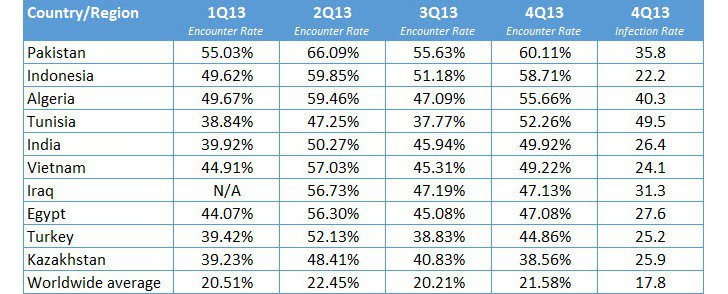Microsoft today released data offered by the two apps, saying that the worldwide average malware encounter rate last year dropped to 21.44 percent, but Pakistan, the country on the leading position, reached a record rate of 55.22 percent.
As far as infection rates are concerned, Microsoft also rolled out details for the fourth quarter of last year, revealing that Tunisia remained the leading country in this regard with a rate of 49.5 percent. Algeria comes second with 40.3 percent, followed by Pakistan with 35.8 percent.
“It might be tempting to assume that because these locations had the highest malware encounter rates in the world, they must also have the highest malware infection rates. However, not every encounter results in an infection. Attempts by malware to infect a machine can be blocked by any number of security protection layers,” Microsoft explained.
Rotbrow, a Trojan horse that installs as a browser add-on affecting browsing and trying to monetize ads, is said to be one of the top 10 threats found in these regions. Microsoft however states that some other threats have also been detected out there in the wild, with click-fraud representing one of the new trends last year.
Cybercriminals are thus trying to click on ads from your computer and thus generate revenues, the company added.
“Researchers have observed Rotbrow installing browser add-ons and other malware. It is commonly packaged with malware used to alter browsing behavior and monetize ads. The browser add-on had legitimately existed without exhibiting malicious behavior,” Microsoft continued.
“However, in 2013, researchers discovered some versions of the Browser Protector process, called BitGuard.exe, secretly installing Win32/Sefnit, which quietly abuses the compromised system by performing click fraud, and dropping an installer File Scout, which was determined to be a malicious downloader in April 2014.”

